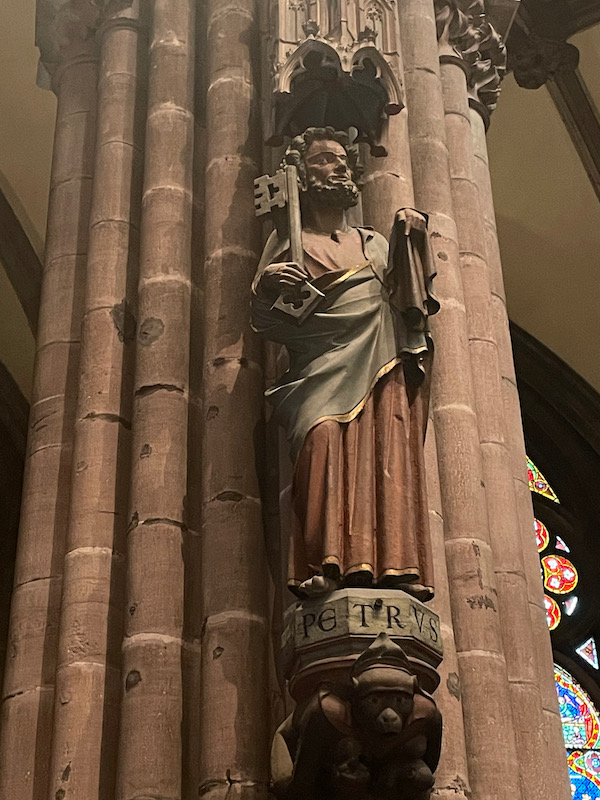Our Blog - Germany 2023 - Freiburg im Breisgau, Germany
Freiburg im Breisgau, or just Freiburg, is a fairly large city with over 200,000 people in the city and about 660,000 in the metropolitan area. It was incorporated in the early 12th century and is known for its medieval church and a Renaissance university. A little piece of trivia: Freiburg is one of the warmest cities in Germany, and it held the all-time German temperature record of 104.4°F from 2003 to 2015. The city also has an unusual system of gutters (called the Freiburg Bächle) that run throughout its center. These Bächle, once used to provide water to fight fires and feed livestock, are constantly flowing with water diverted from the Dreisam River. They were never intended to be used for sewage, and even in the Middle Ages such use could lead to harsh penalties.
The Historical Merchants Hall (Historisches Kaufhaus), is a Late Gothic building on the south side of Freiburg's Münsterplatz. Built between 1520 and 1530, it was once the center of the financial life of the region. Its façade is decorated with statues and the coat of arms of four Habsburg emperors.

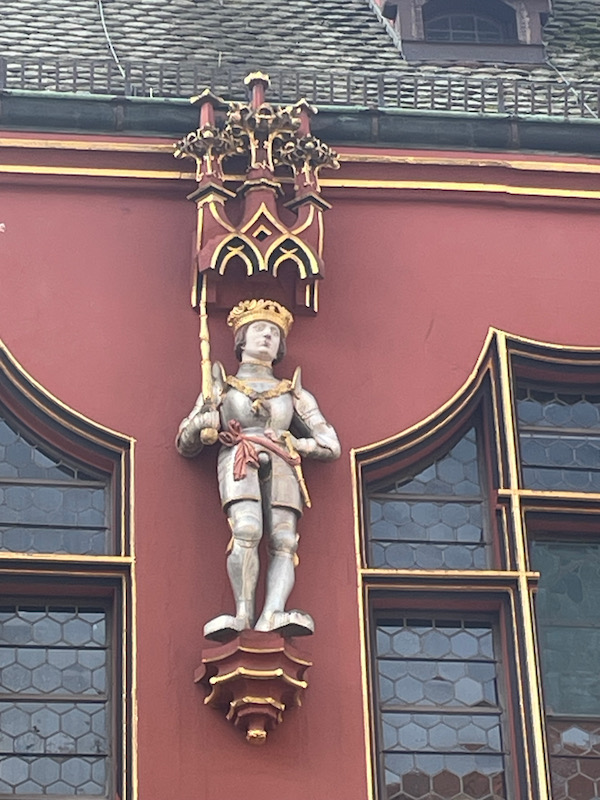
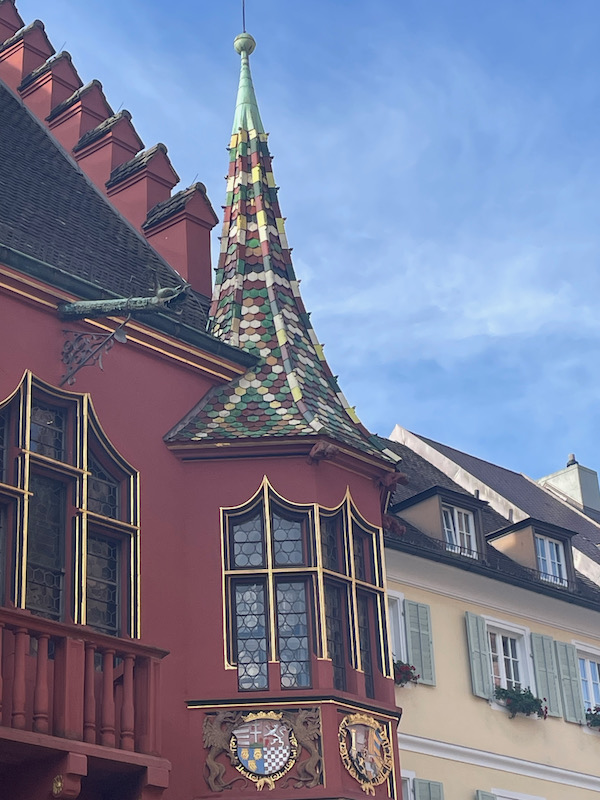
This building is called the Wale House, although the only thing I can find as to why it is called that is that it may have something to do with the story of Jonah and the Whale, but that doesn't exactly explain it :-) It dates to the 1500's and originally was part of a complex of around 15 buildings. While the majority of the façade is pretty simple, the portal and bay window are highly decorated.
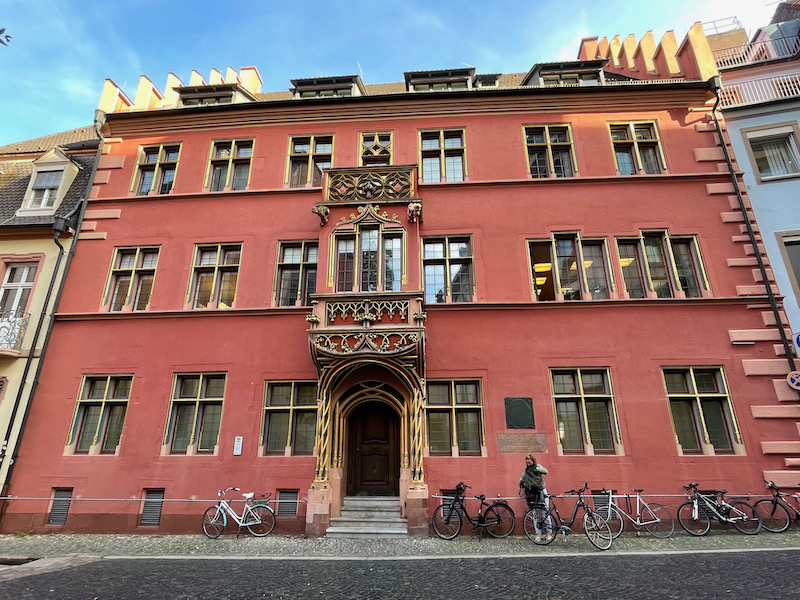
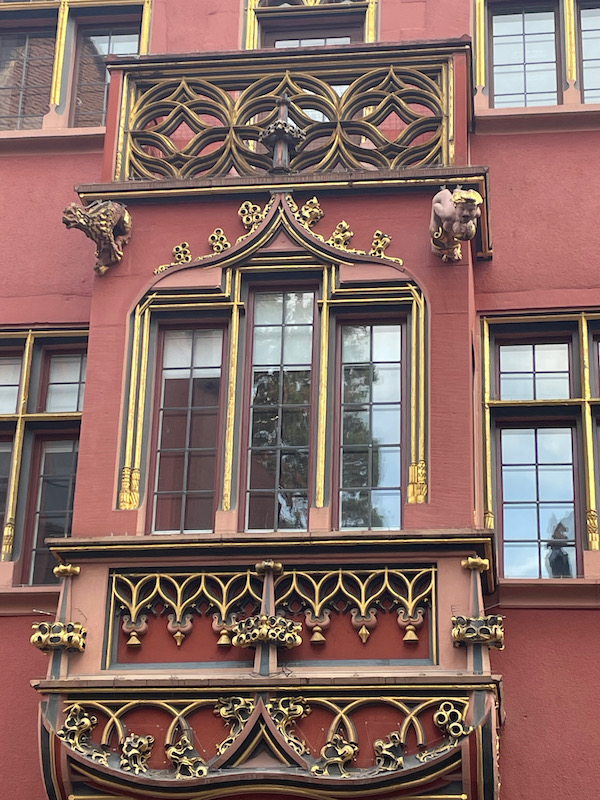

Martinskirche, or St. Martin's church, is dedicated to Saint Martin and was built as a monastery church of a Franciscan convent. Part of the building was completed in the late 1200s while the nave was completed in 1318. After the 30 Years War, the interior was modified using Baroque style. In 1807, the pastor decided to remove some of the baroque altars. Outside, the exterior is pretty simple, and the Gothic arches that you see on the front continue into the interior aisles. It also is another church with a flat wooden ceiling.
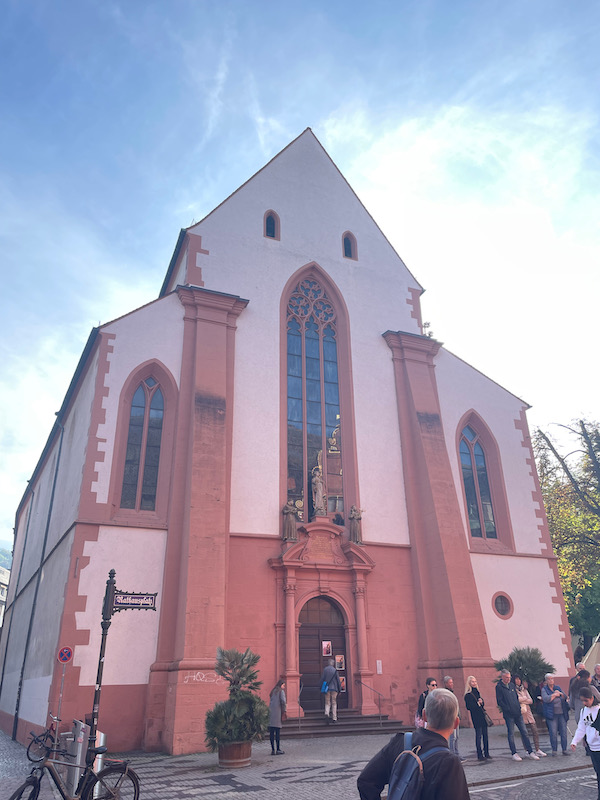
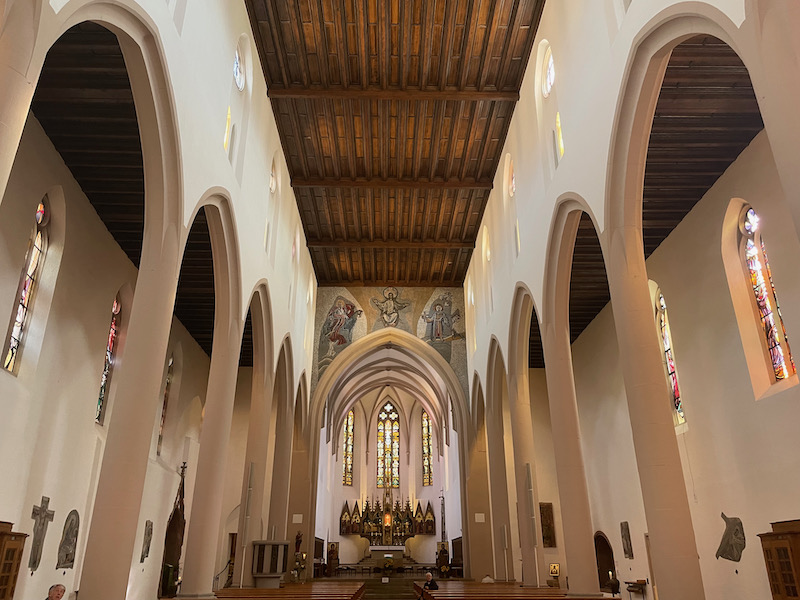
The interior is very "clean" without much decoration. The former neo-Gothic furnishings were lost in the air raid on Freiburg in 1944 when the church caught fire due to phosphorus bombs and the spire fell into the nave. The burned-out building was rebuilt between 1949 and 1951. What we have now are a few modern-looking mosaics here and there long with quite nice (and modern) stained-glass windows, including one in the middle of a very modern-looking organ.
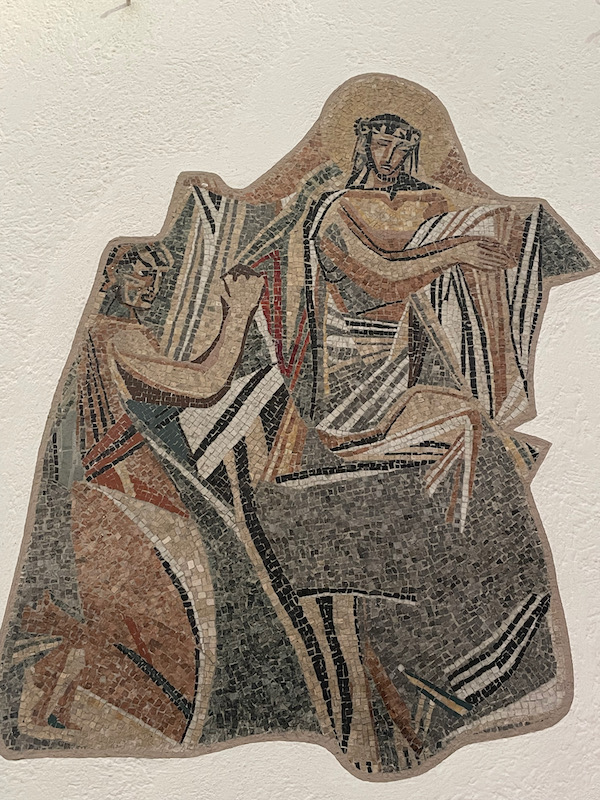
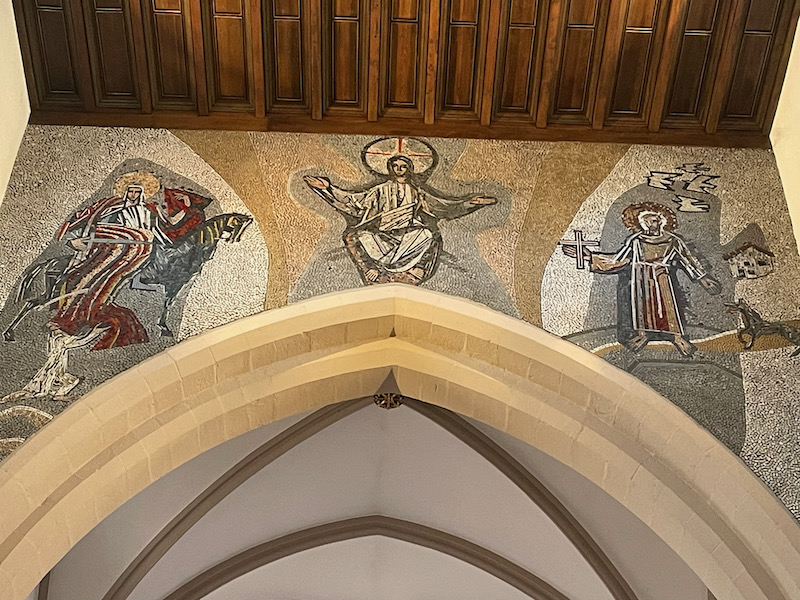
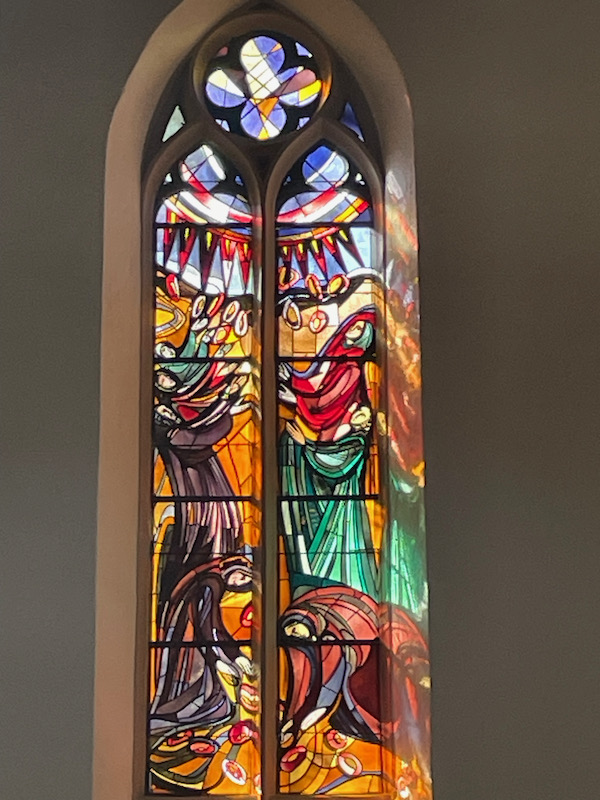
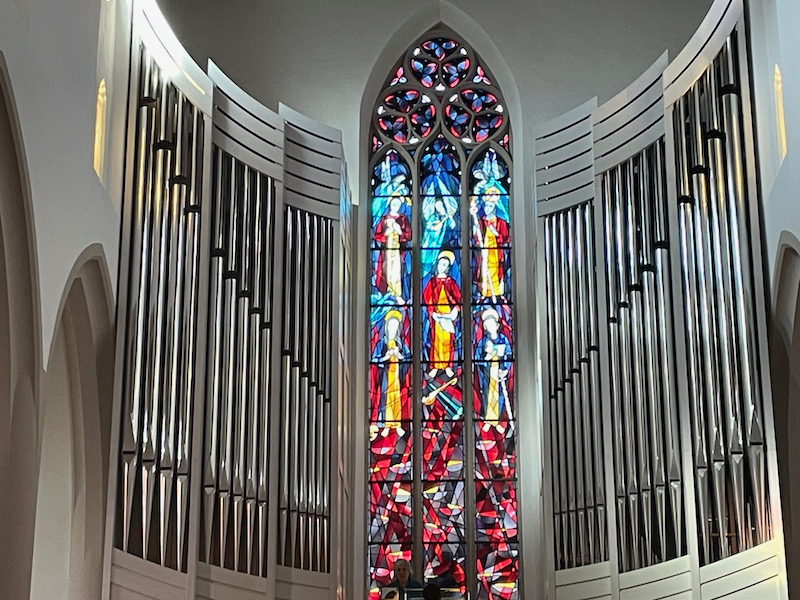
There are a few things that seem a bit older to me ... an interesting main altarpiece, and then what looks like a very old fresco in a niche.
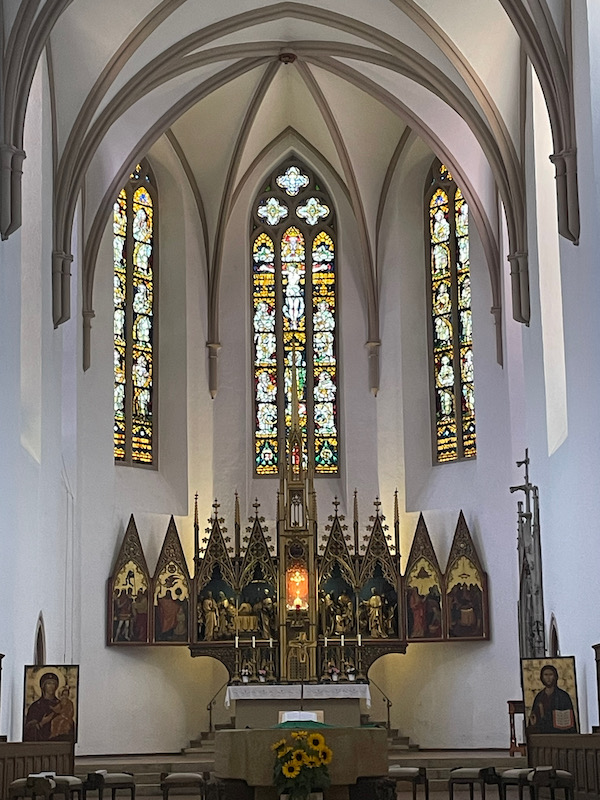
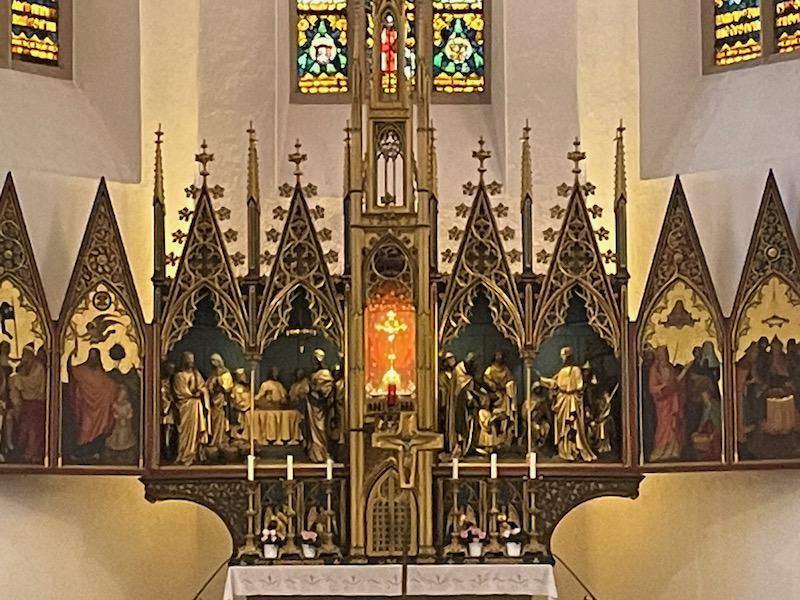

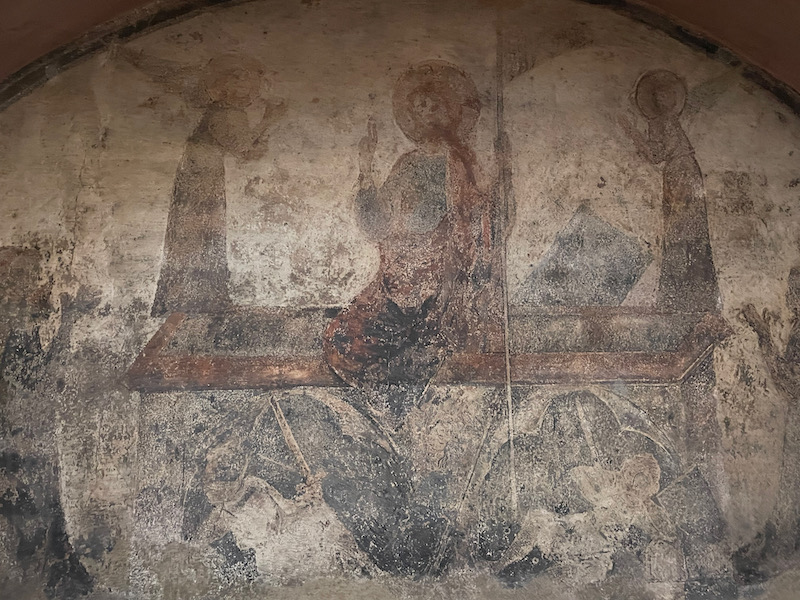
The old and new Town Hall buildings are next to each other. The old town hall building was built in the middle of the 14th century but burned down completely during an air raid in 1944 and reconstructed between 1949 and 1954. Because it was reconstructed, the "old" town hall is actually newer than the "new" town hall.
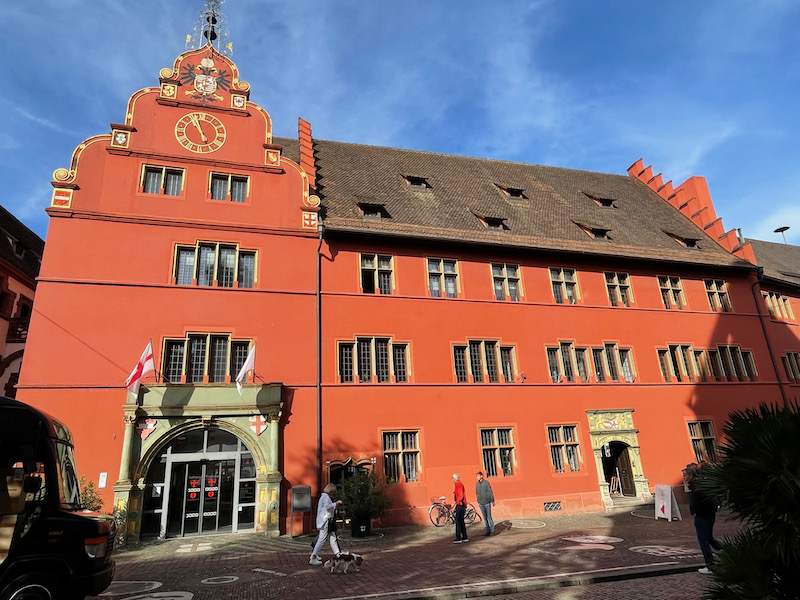
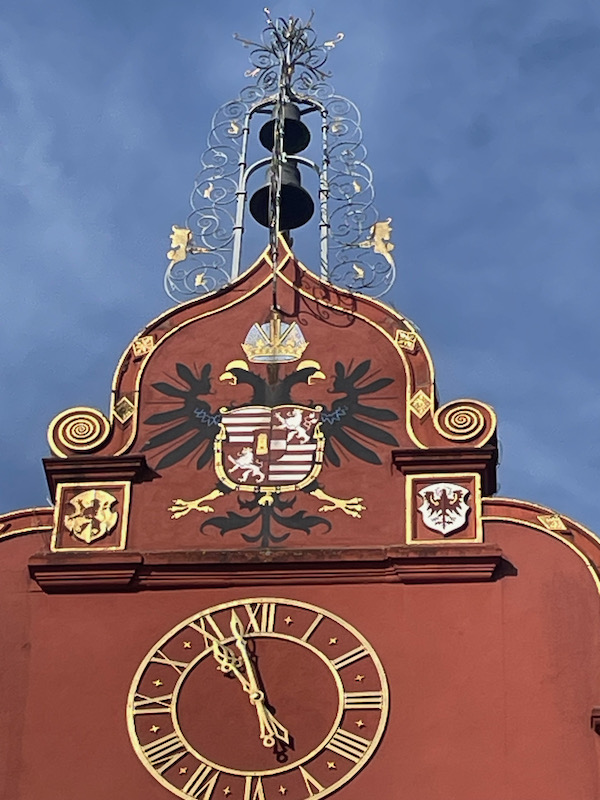
Next door is the new town hall building. The origins date back to a house that was built around 1540. The university bought it and a couple other buildings to make it into a complex. It was turned into the new town hall in 1901.
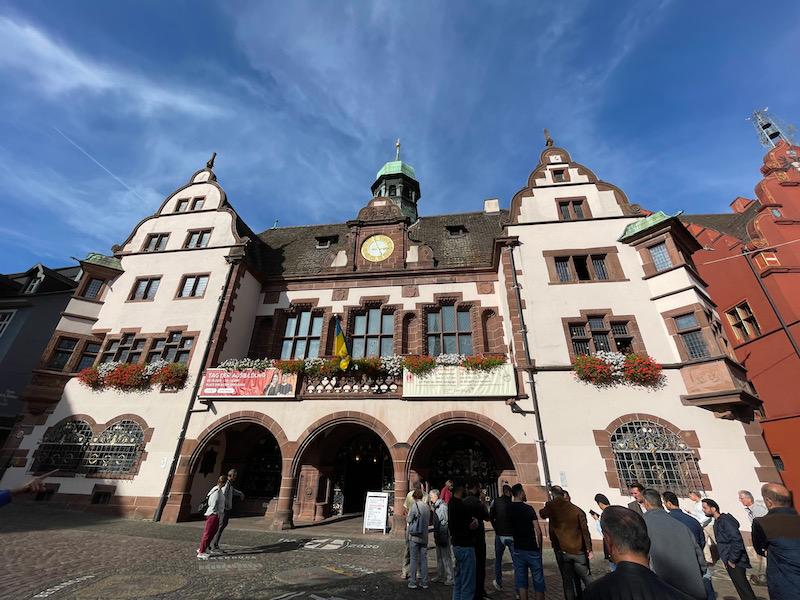
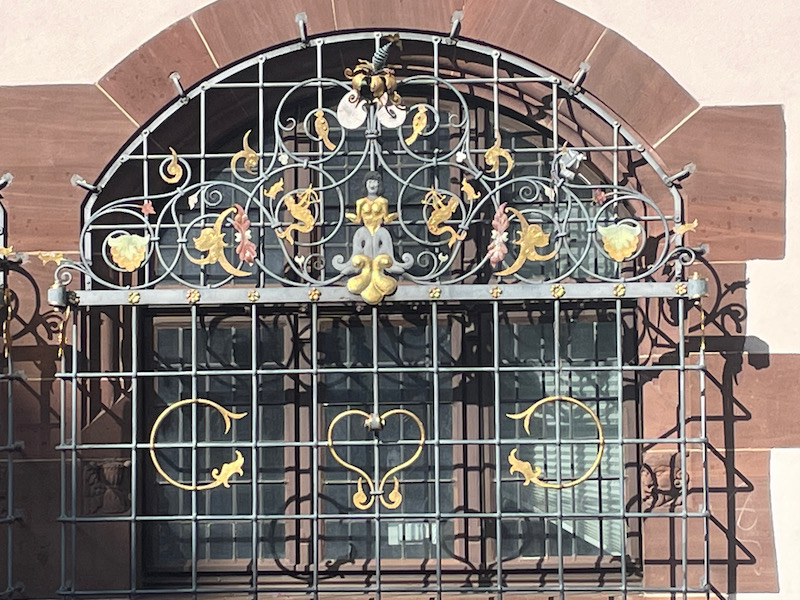
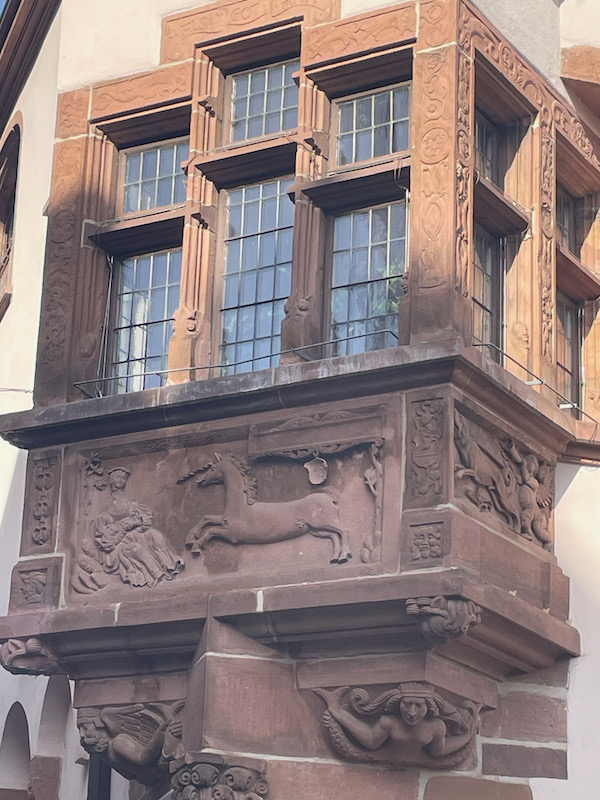
The Schwabentor is the more recent of the 2 remaining city gates in Freiburg. It was built around 1250, but at that time, it was about 1/2 the current height. At the end of the 19th century, there was a call to demolish the remaining city gates for traffic reasons but the Mayor at the time campaigned to preserve them. They also did a renovation in 2012, which found cracks in the stones and an unstable foundation (only 1 side was really solid). They were able to add steel strips and expansion resin to harden the foundations.
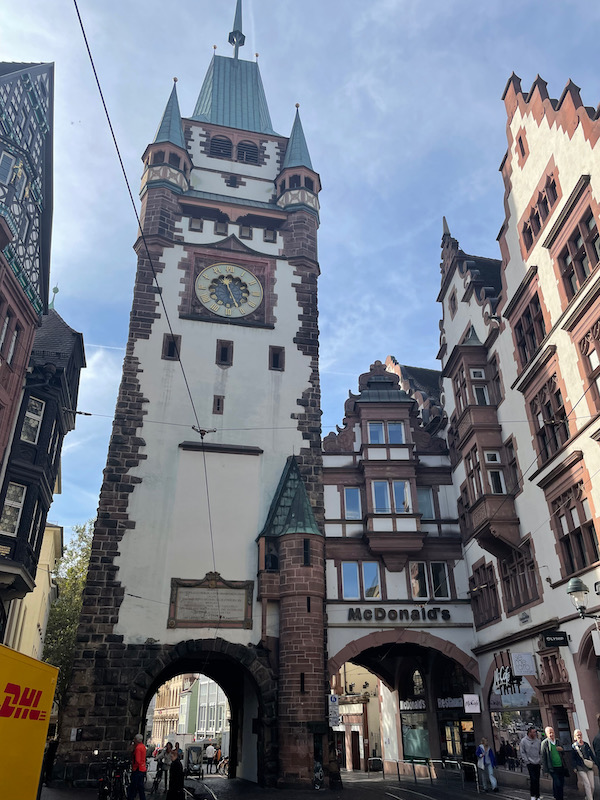
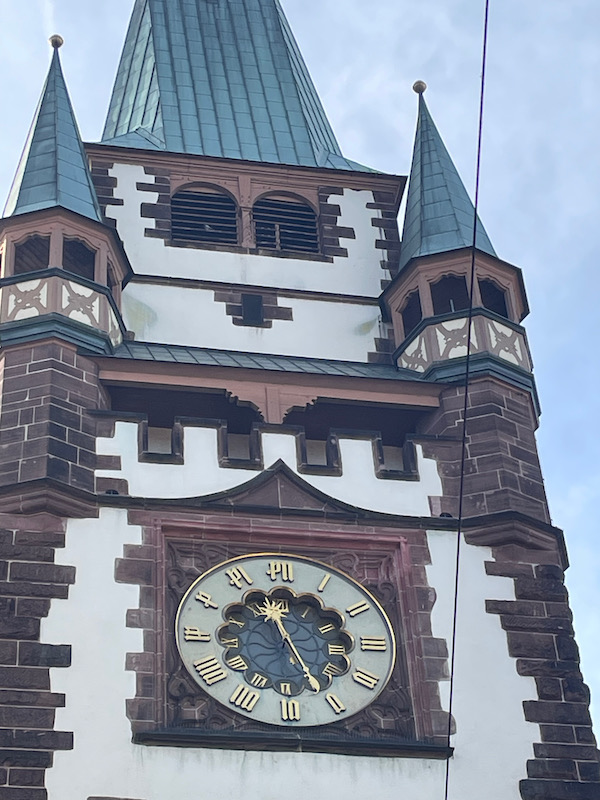
Near the Schwabentor were a few nice buildings.
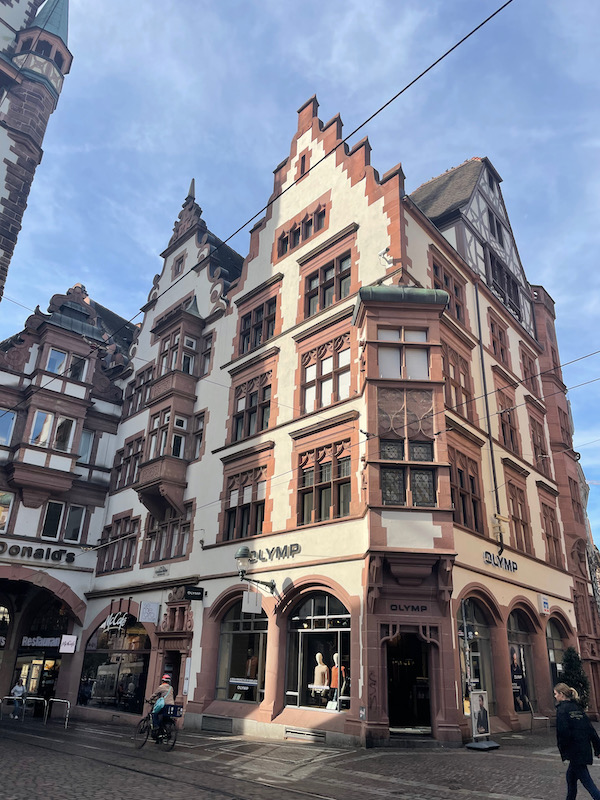
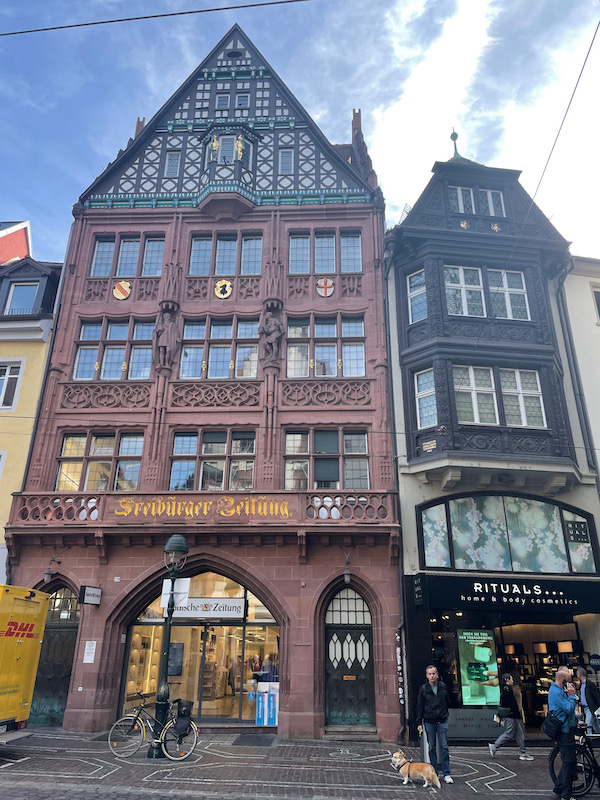
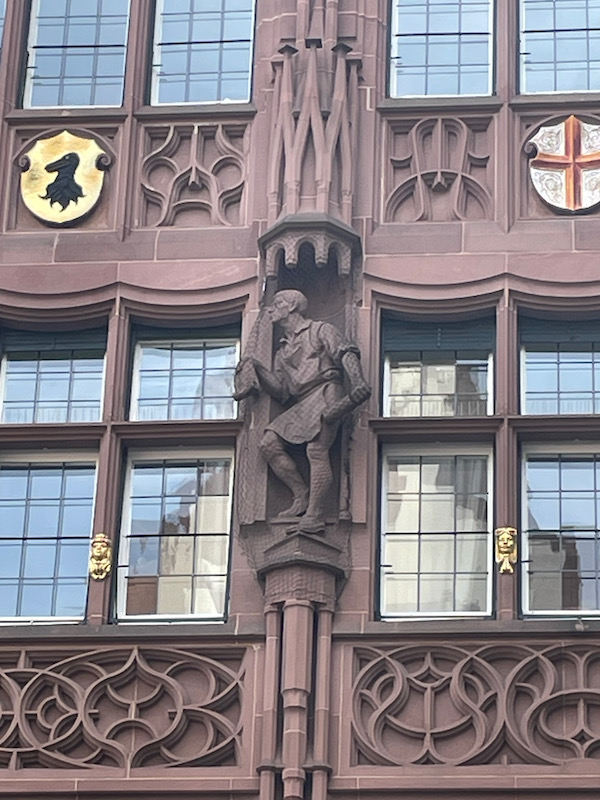
In the Münsterplatz is one of the oldest city fountains, dating back to the 1480s. It is called "Fischbrunnen" or "fish fountain" and it actually used to be where fresh fish were kept and sold during market days. We happened to be there on a market day, as you could see from a couple pictures, but the fountain was fish-less!
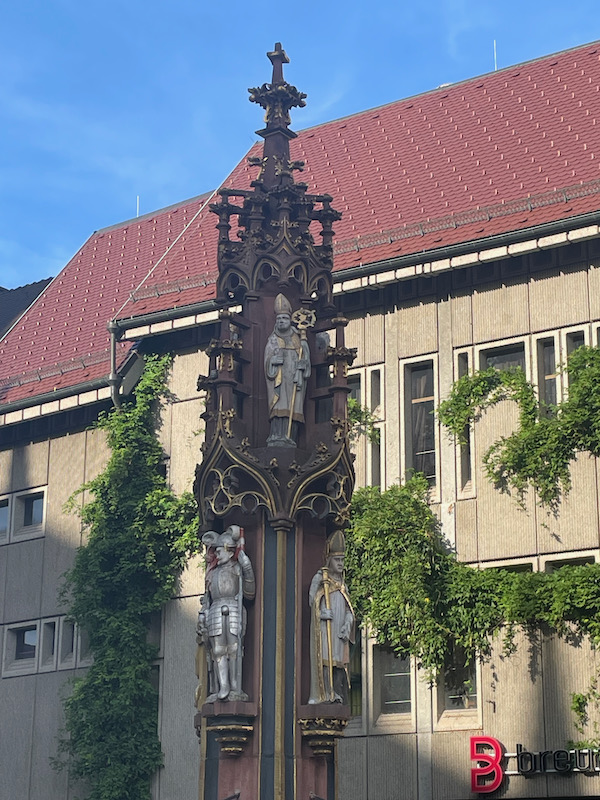
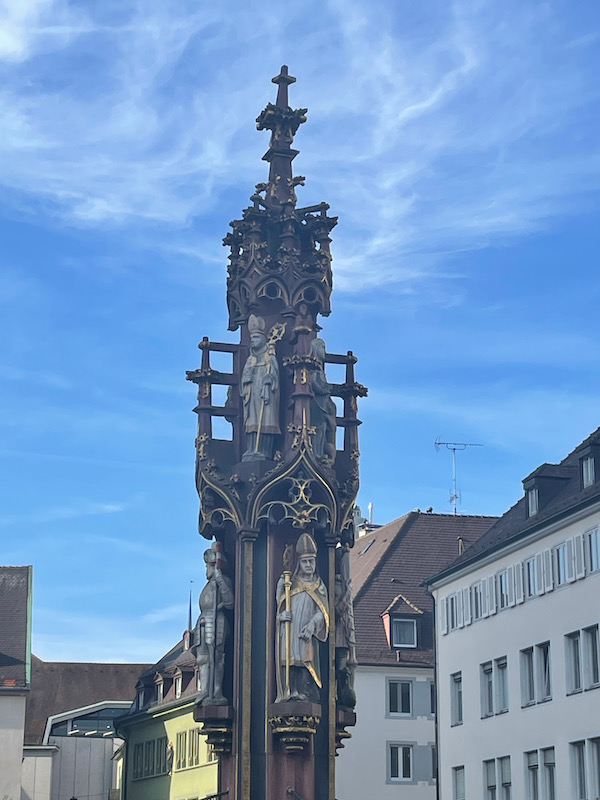
The last half the blog will be taken up by the Freiburg Munster. While it is technically now a Cathedral, since it became the head of the bishopric in 1827, it is still normally called the Munster. Architecturally, it started in the Romanesque style around 1200 and was largely completed in the Gothic and late Gothic styles in 1513. It was a sunny day so not all of the pictures are ideal, and there was also a market going on in the square around it. The main tower is 116 meters tall with a viewing platform at 70 meters (no, we didn't climb up). When the tower was completed in 1330, it was one of the tallest buildings in the world. The clock was added in 1851 and while it still runs, it doesn't drive the outer clock hand and no longer rings the bells. There is also a tiny octagonal tower on the side which reminded me of the towers in Toulouse. This is one of the few buildings that was not destroyed during WWII.
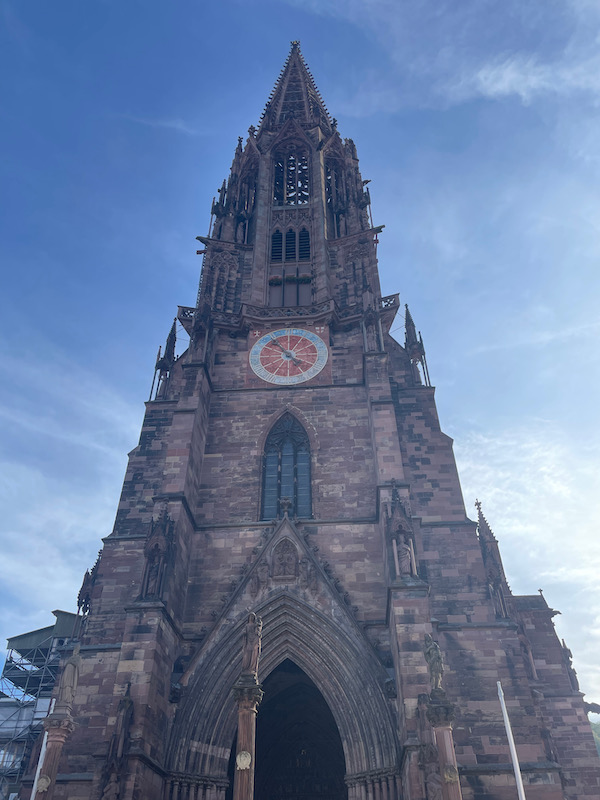
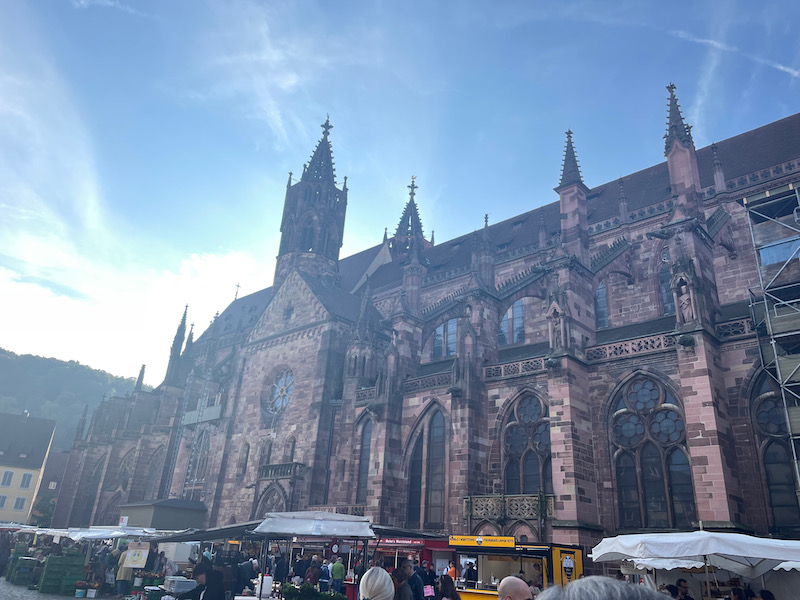
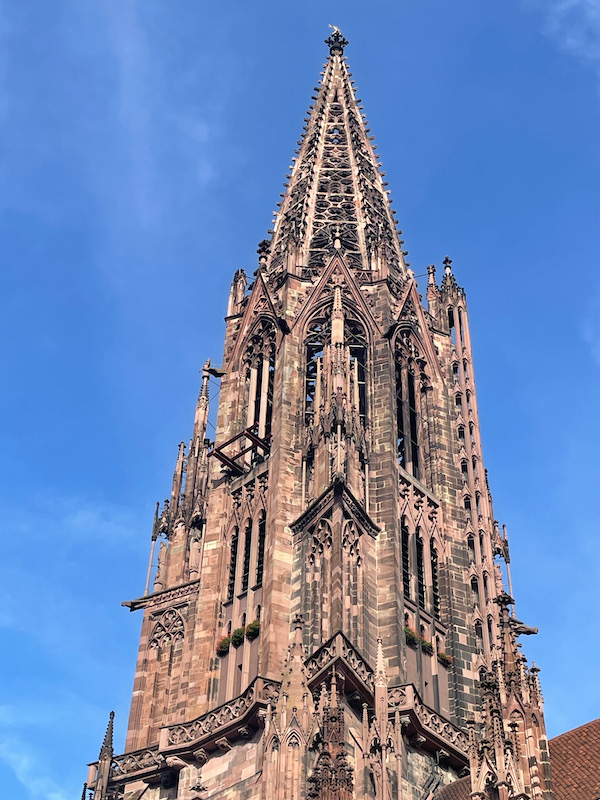
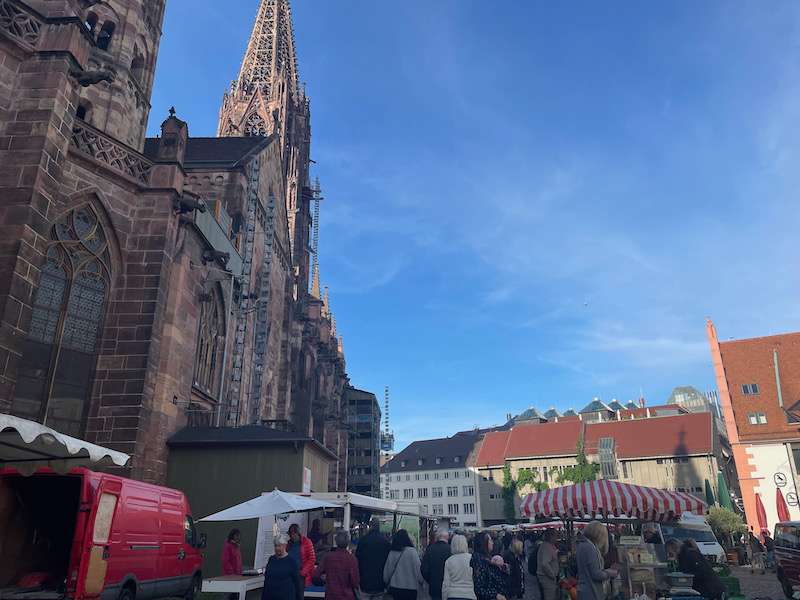
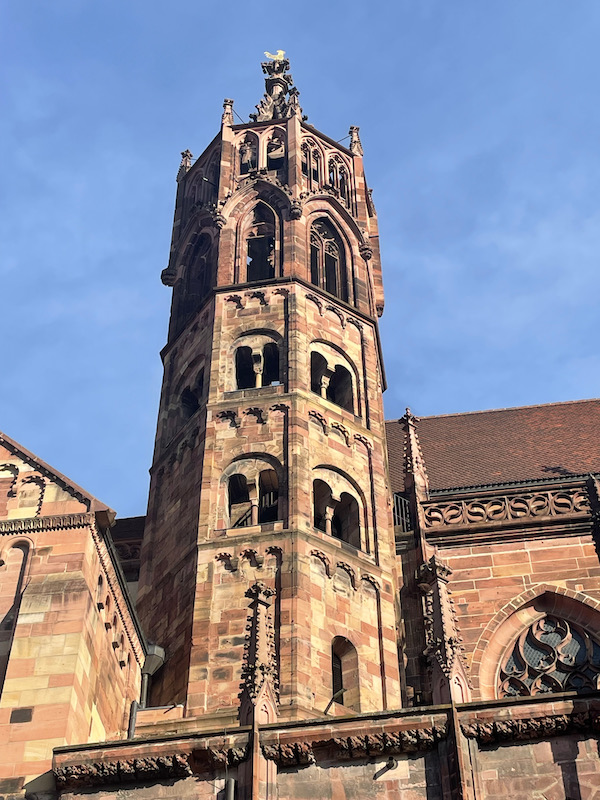
I thought the gargoyles were unique!
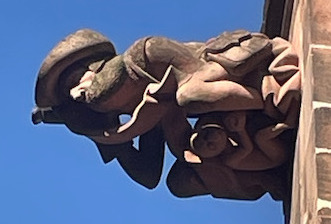
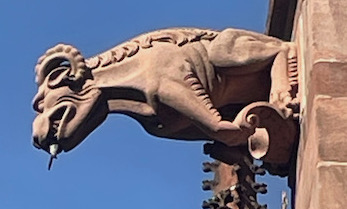
The Renaissance porch on the south side was added in the 16th century.
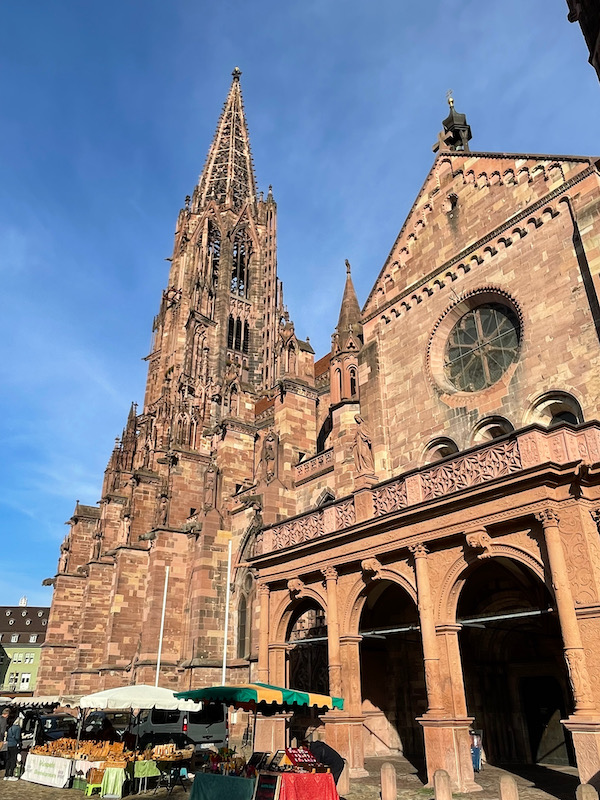
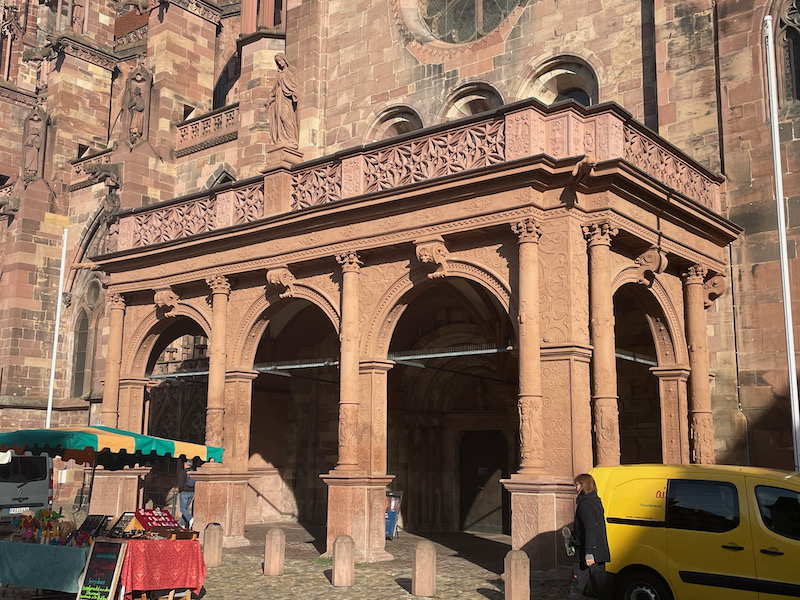
The main entrance is through the Gothic portal hall of the tower. The outside is fairly plain but then when you walk into the square hall, there are statues on both sides. The tympanum shows a depiction of the Last Judgement along with scenes from the life of Jesus (Birth and Passion).
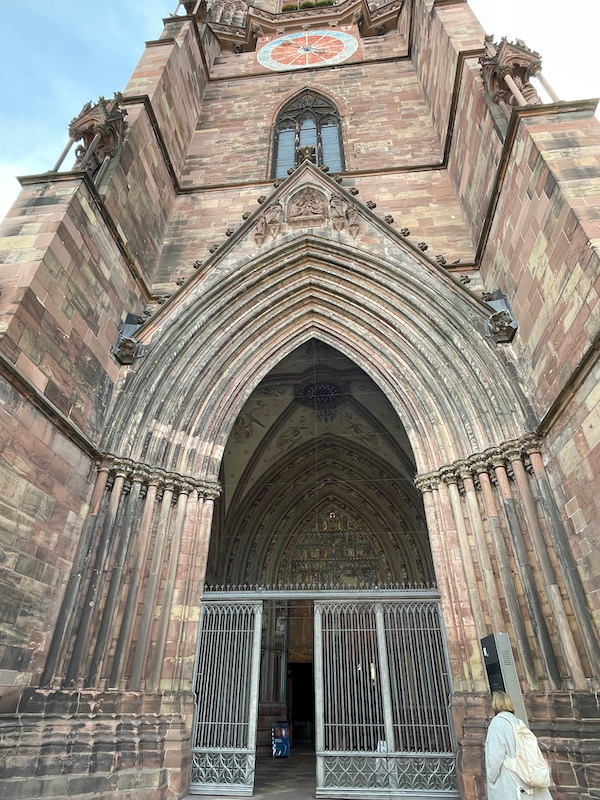
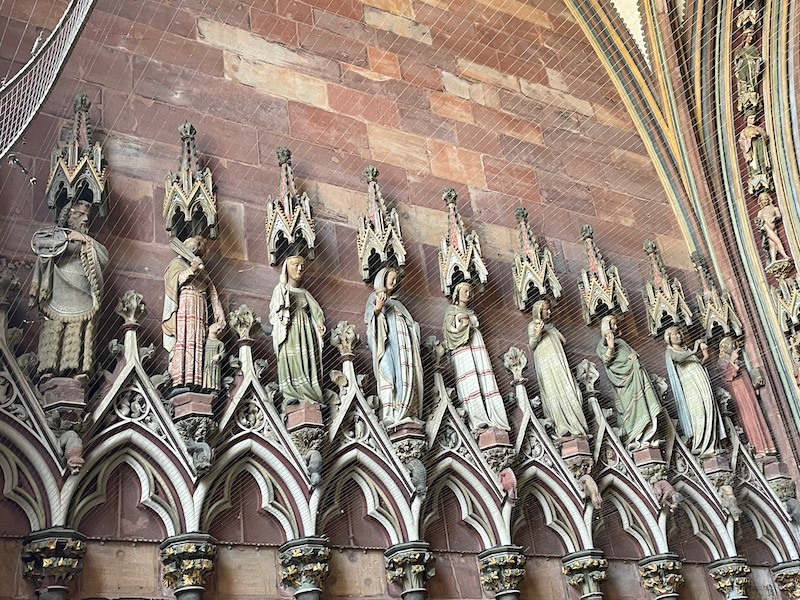
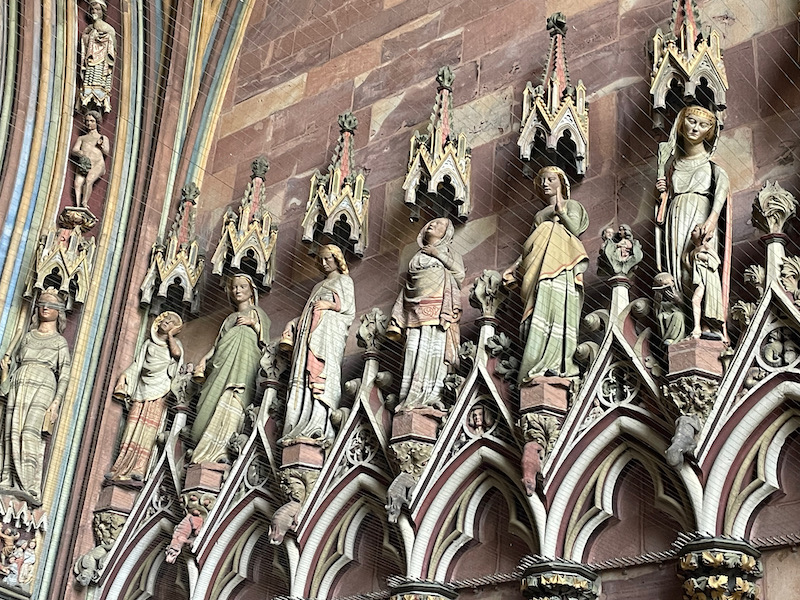
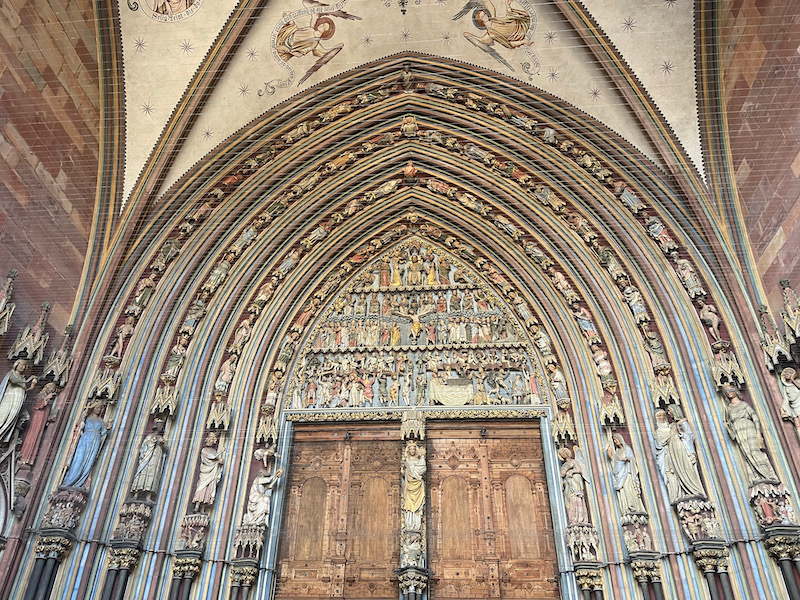
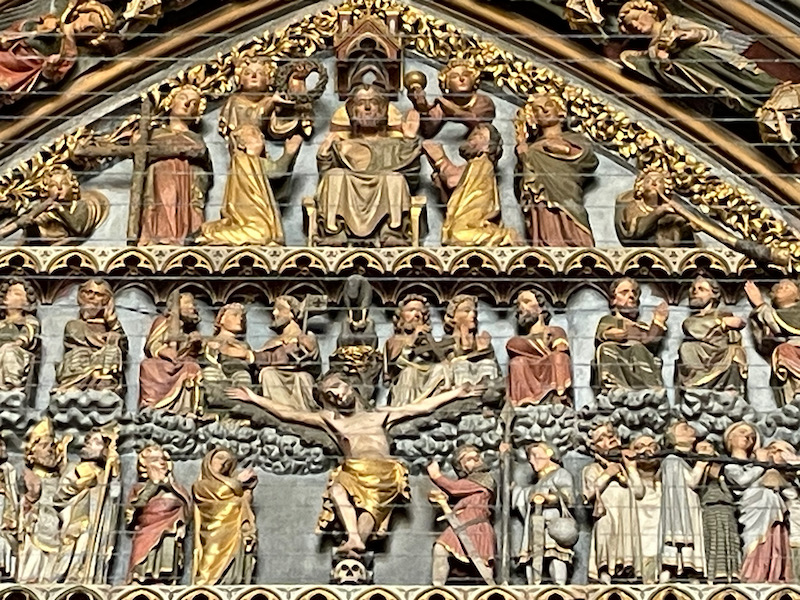
The interior has a long Gothic nave with side aisles.

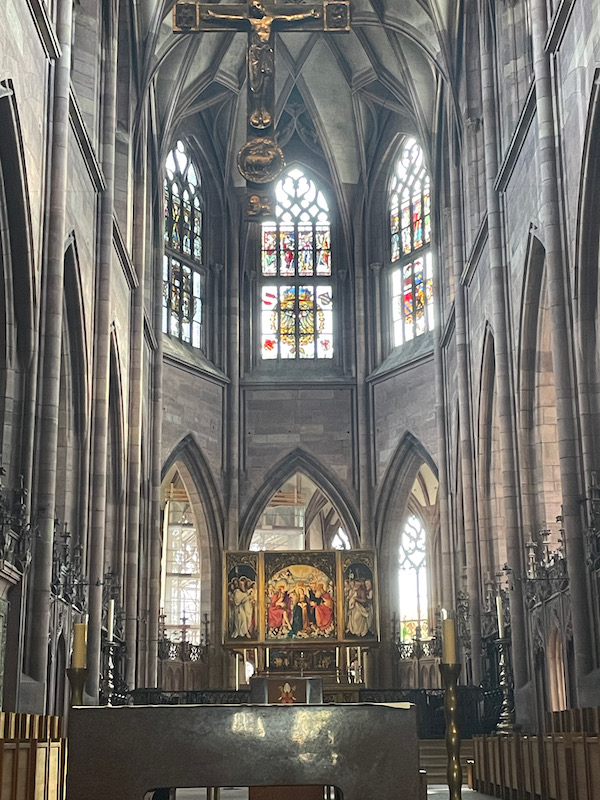
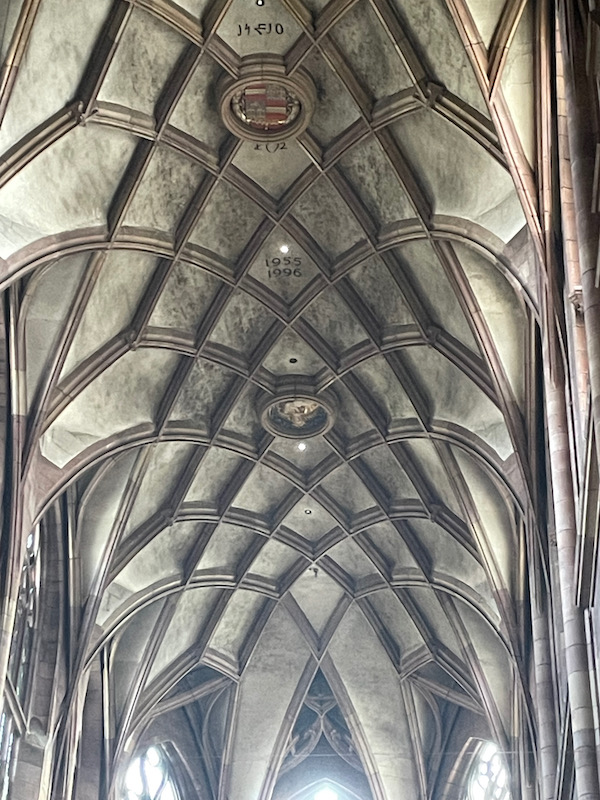
The stained-glass windows throughout the church date from various construction periods, but some of the medieval windows were lost during the Gothic construction period. The windows were removed during WWII, so they were saved from destruction that the air pressure and shrapnel of the bombing raids in 1944 would have caused. Here are a few examples of the windows, including one on the south side of the nave, another interesting one with a guy swinging a sword, and one of the smaller rose windows.
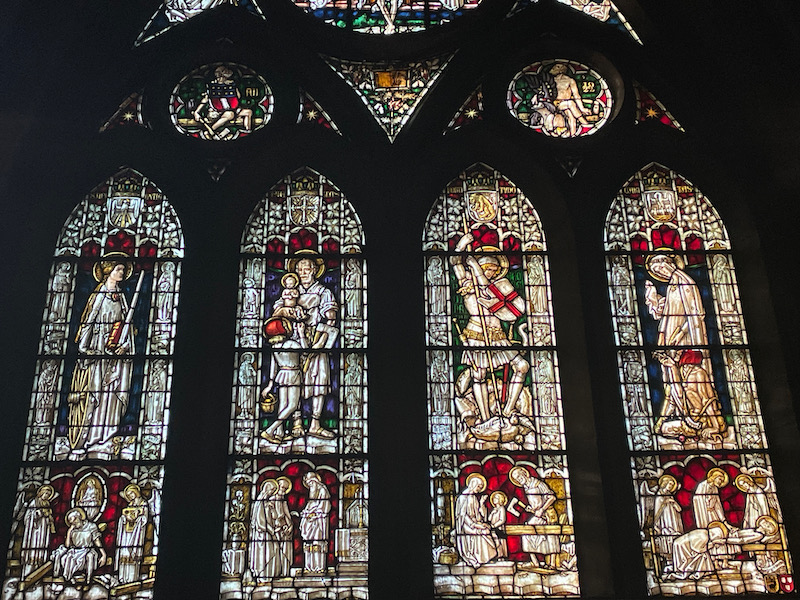

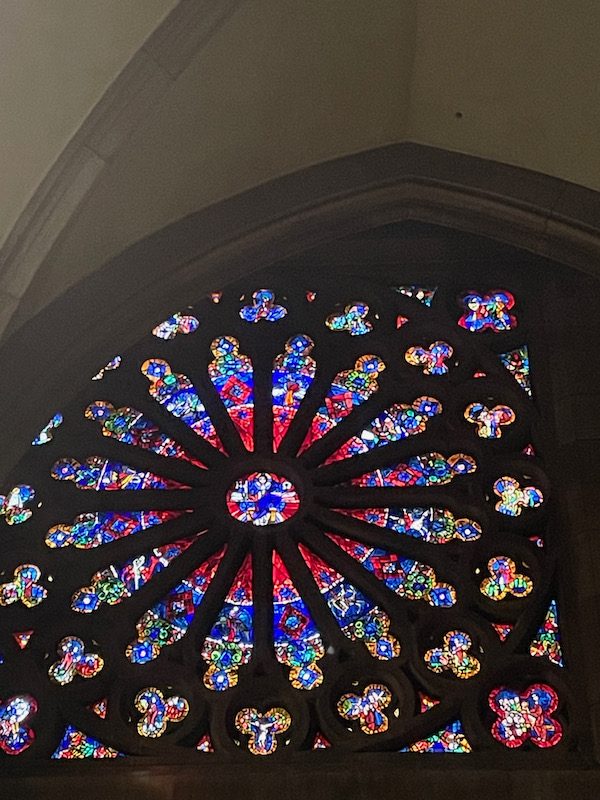
Similar to other churches in Germany, many of their altarpieces are "shrines" or "shrine groups" where you have statues inside of a box. This first "shrine group" shows the Adoration of the Magi and was done in 1505. The second is another altar shrine from the church.
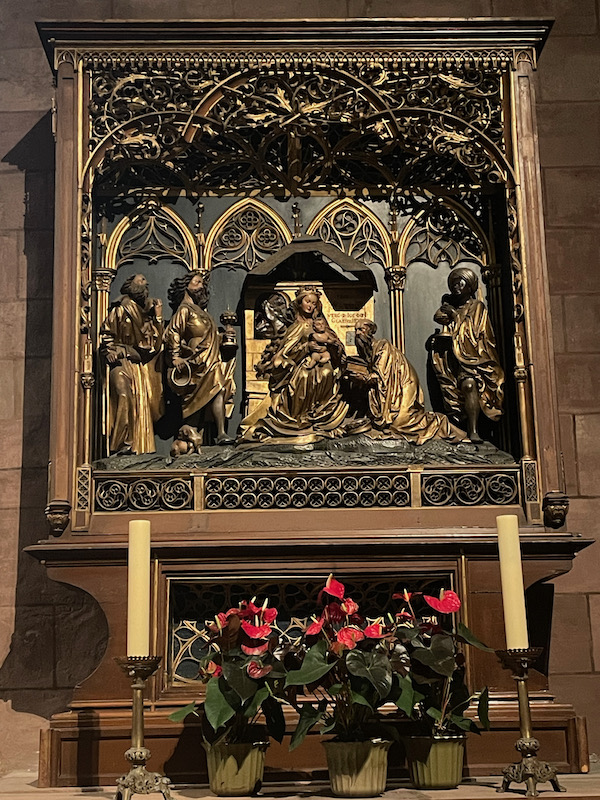
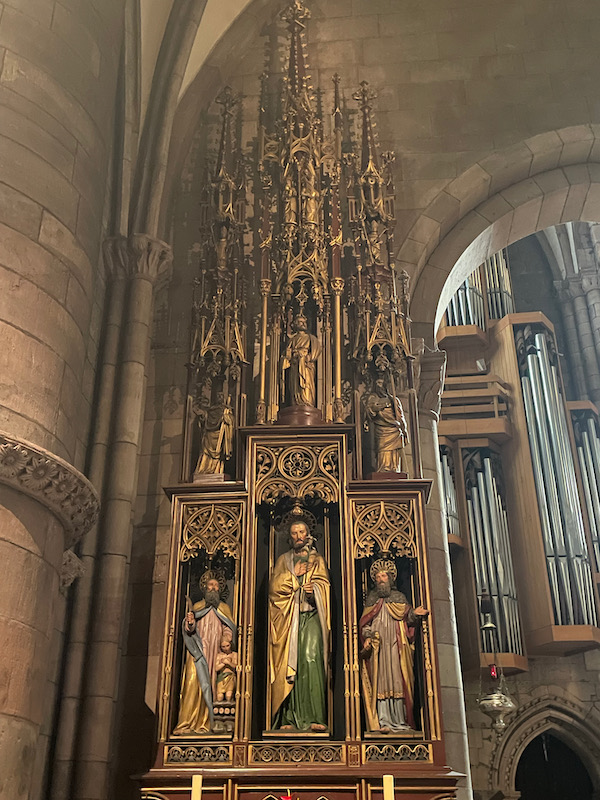
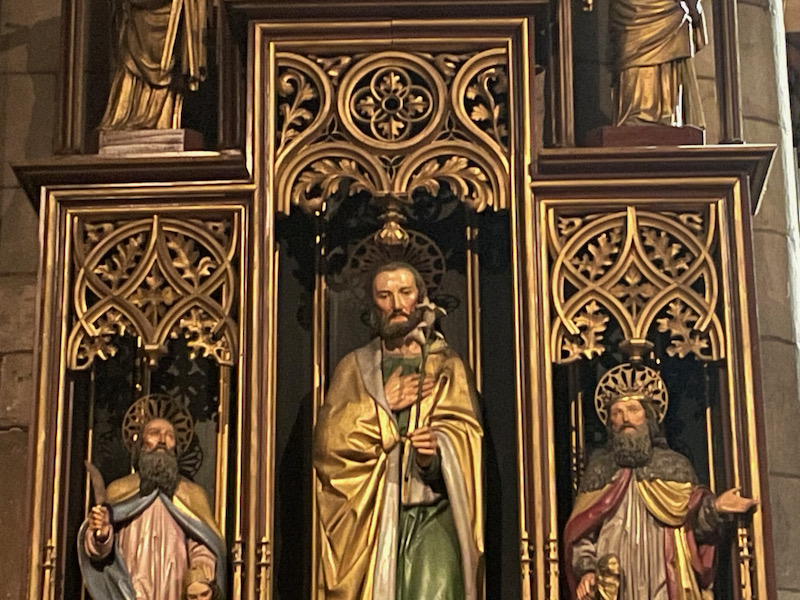
There are lots of side chapels, each with its' own small altar retable and closed off with a metal gate. The first altarpiece I show close-up is in the University chapel, which was built between 1505 and 1507. It was meant for the graves of professors and 36 burials are recorded in that chapel up to 1789. The altarpiece is called the Oberried altar, which was added in 1554 and is considered one of the most important in the church. The two paintings on the wings were painted in 1525 and integrated into this altar later. The middle panel shows the birth of Christ in an ancient ruin (on the left) and the adoration of the magi (on the right).
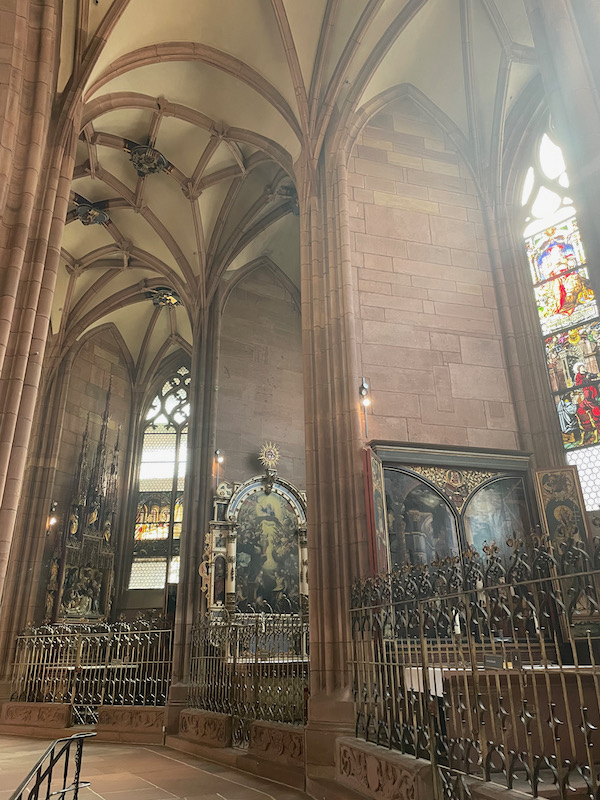
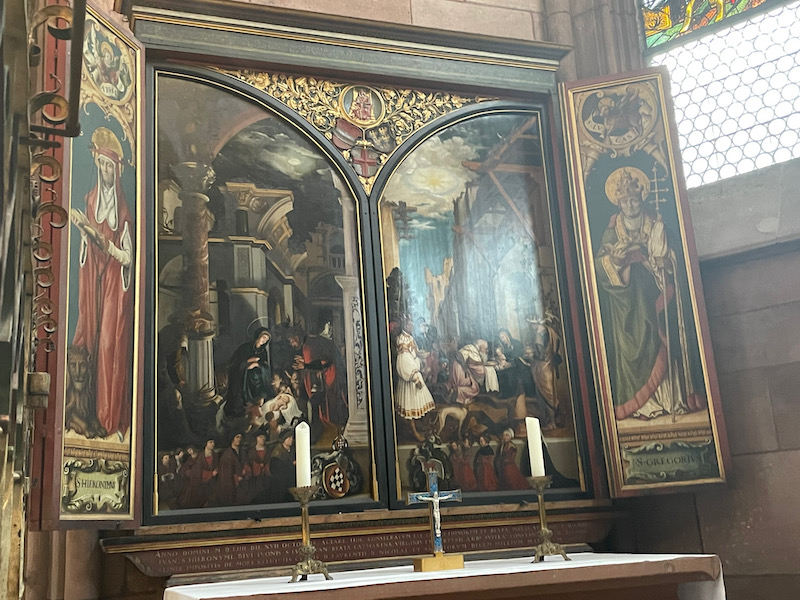
The neo-Gothic altar that is in the Southern Imperial Chapel dates from 1875 and is entitled the Maria Immaculata altar. It depicts the Immaculate Conception of Mary, with the central figure of Mary stepping on the serpent's head with her left foot as a sign of her victory over worldly sin.
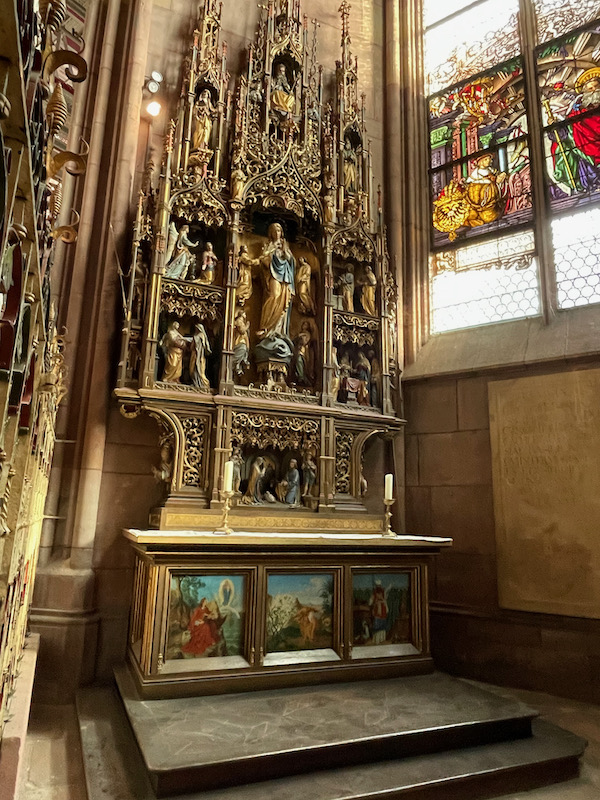
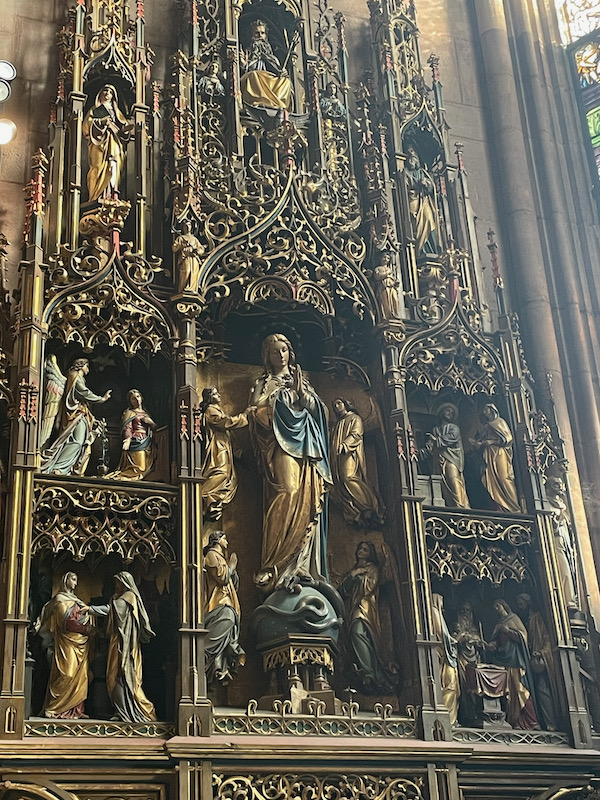
A few more random pictures from chapels, some with paintings and others with carved altarpieces.
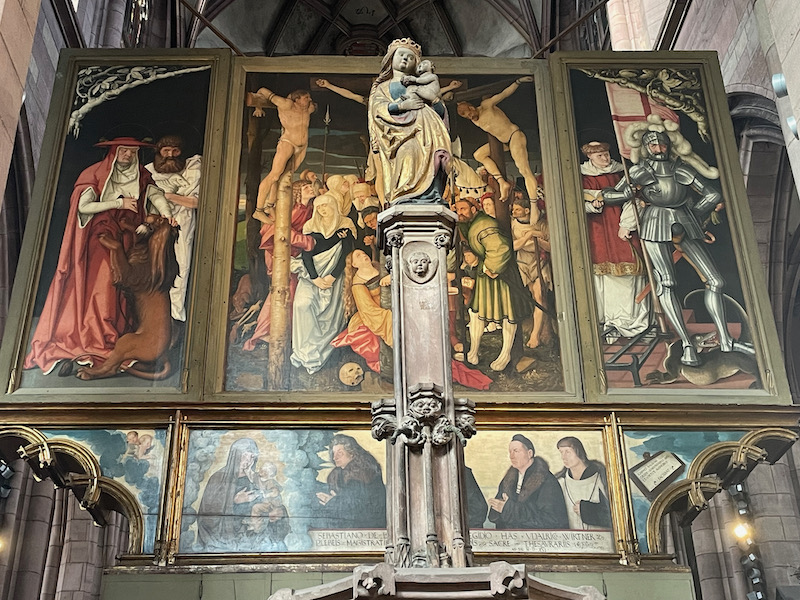
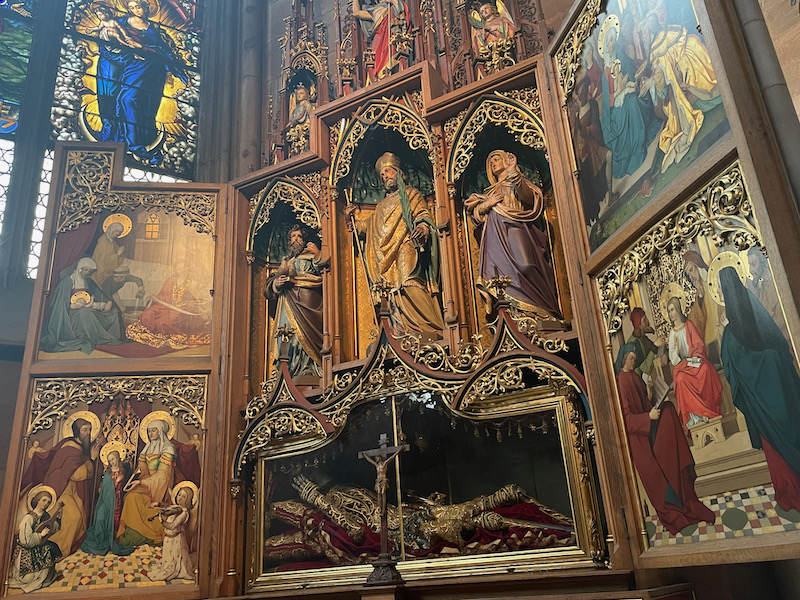
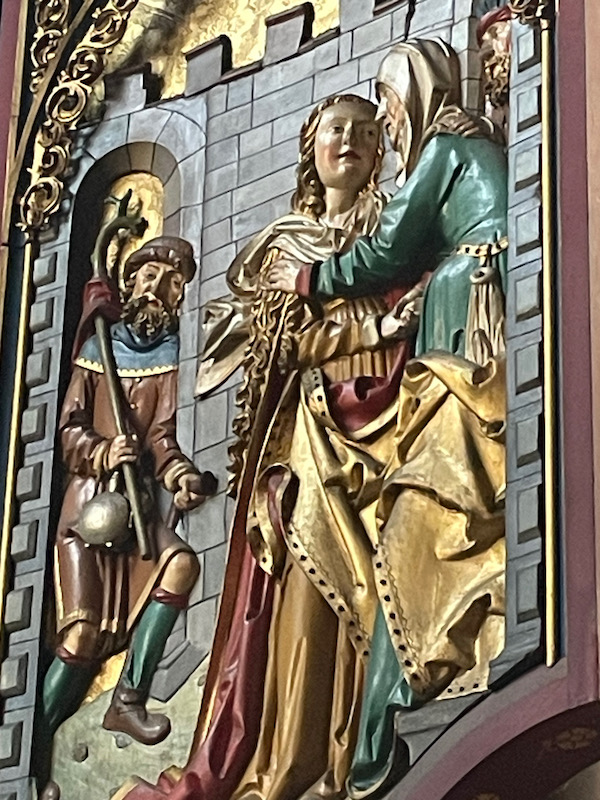
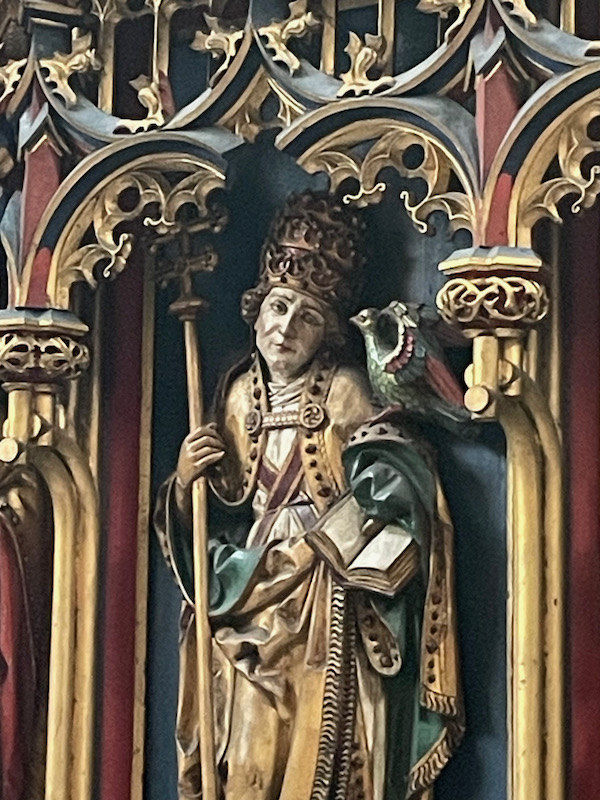
The high altarpiece is a convertible altar consisting of a total of 11 panels, commissioned in 1512 and has stood in the choir here since 1516. During the Christmas season, the altar is closed and shows 4 scenes from the life of Mary. Here, we see the altarpiece open. The central scene shows the coronation of Mary. On each of the 2 side-wings, there are 6 white-clad apostoles in front of a black sky.
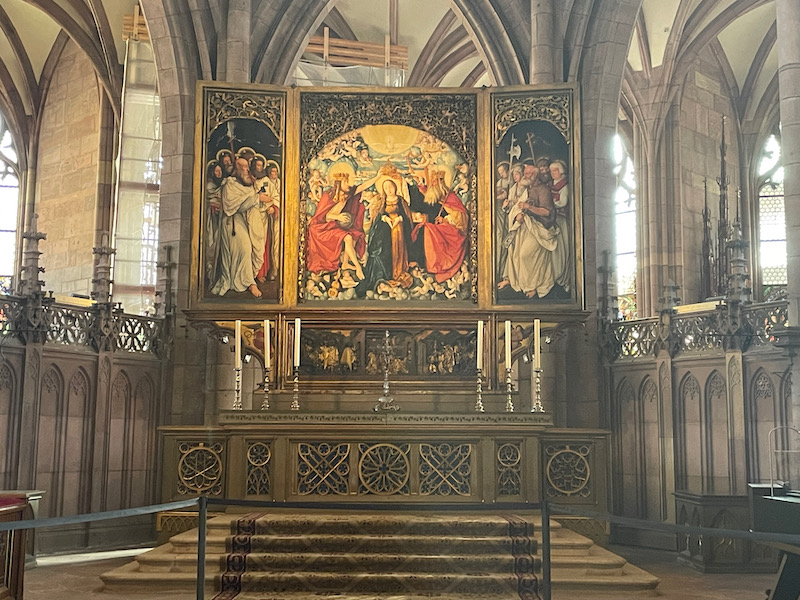
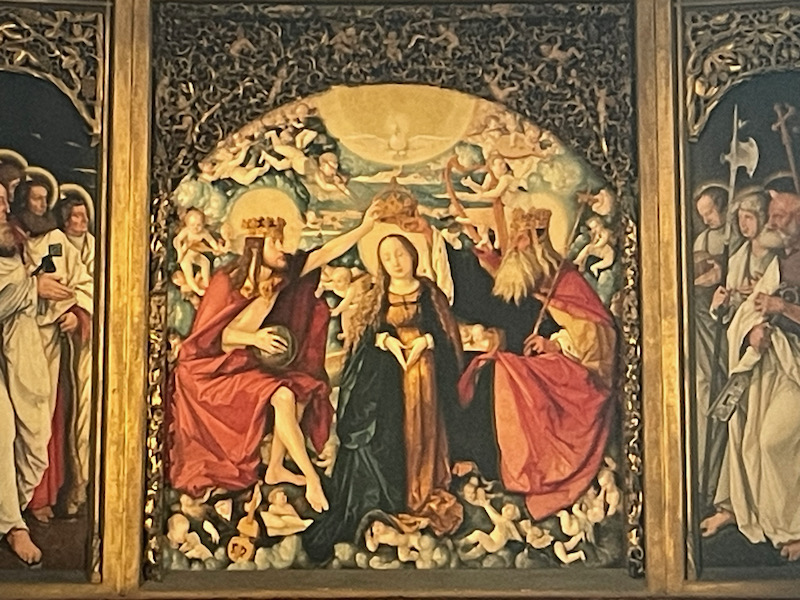
Last but not least, a polychrome statue of Saint Peter holding the key.
